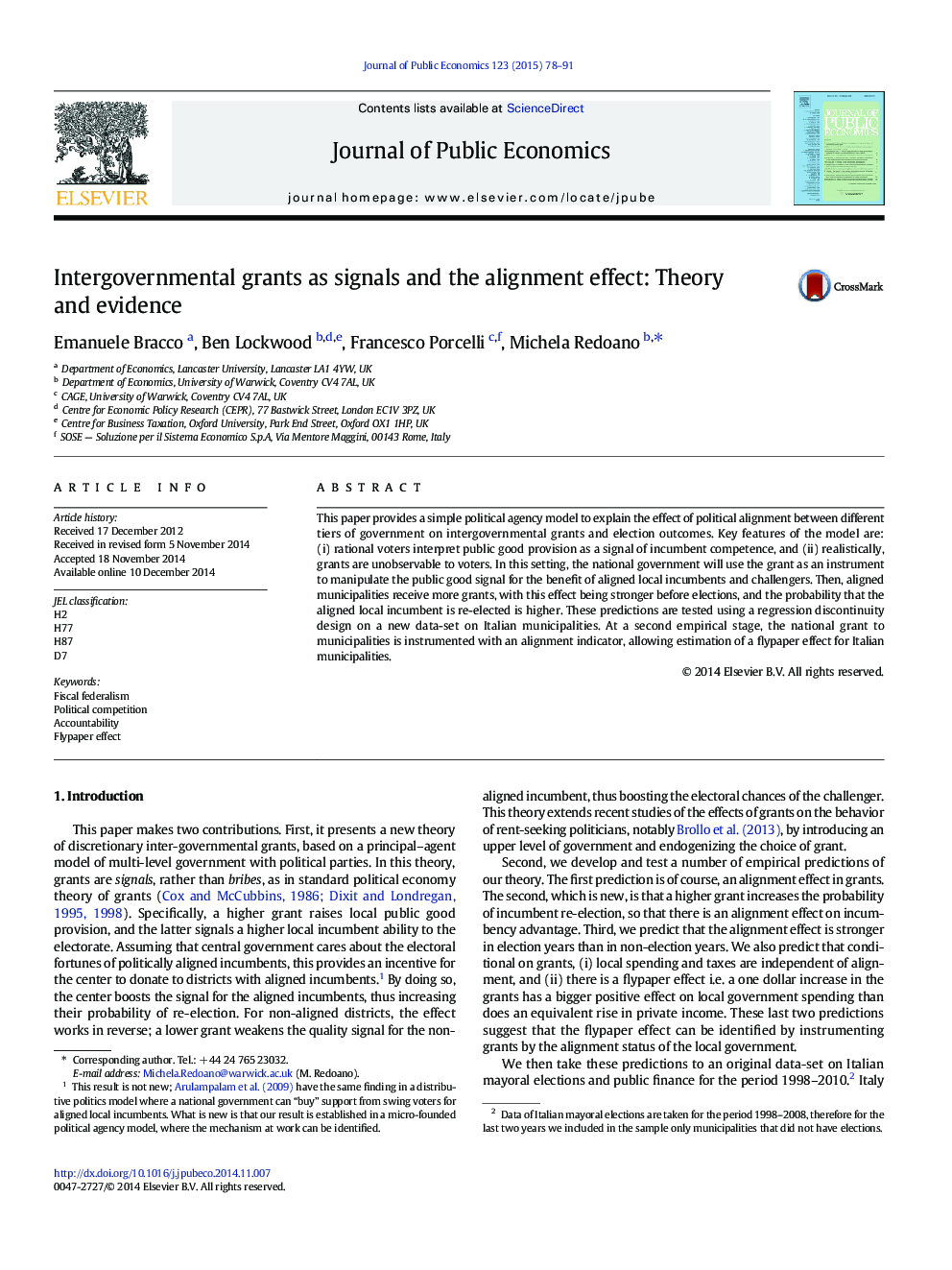| Article ID | Journal | Published Year | Pages | File Type |
|---|---|---|---|---|
| 969672 | Journal of Public Economics | 2015 | 14 Pages |
Abstract
This paper provides a simple political agency model to explain the effect of political alignment between different tiers of government on intergovernmental grants and election outcomes. Key features of the model are: (i) rational voters interpret public good provision as a signal of incumbent competence, and (ii) realistically, grants are unobservable to voters. In this setting, the national government will use the grant as an instrument to manipulate the public good signal for the benefit of aligned local incumbents and challengers. Then, aligned municipalities receive more grants, with this effect being stronger before elections, and the probability that the aligned local incumbent is re-elected is higher. These predictions are tested using a regression discontinuity design on a new data-set on Italian municipalities. At a second empirical stage, the national grant to municipalities is instrumented with an alignment indicator, allowing estimation of a flypaper effect for Italian municipalities.
Related Topics
Social Sciences and Humanities
Economics, Econometrics and Finance
Economics and Econometrics
Authors
Emanuele Bracco, Ben Lockwood, Francesco Porcelli, Michela Redoano,
